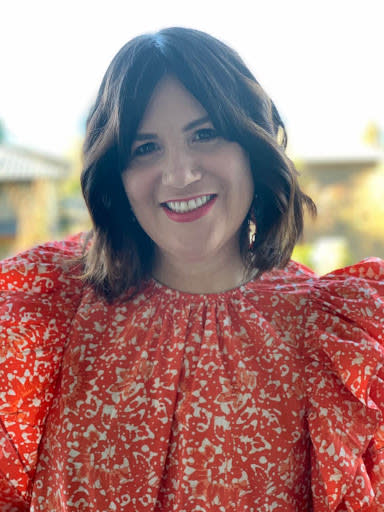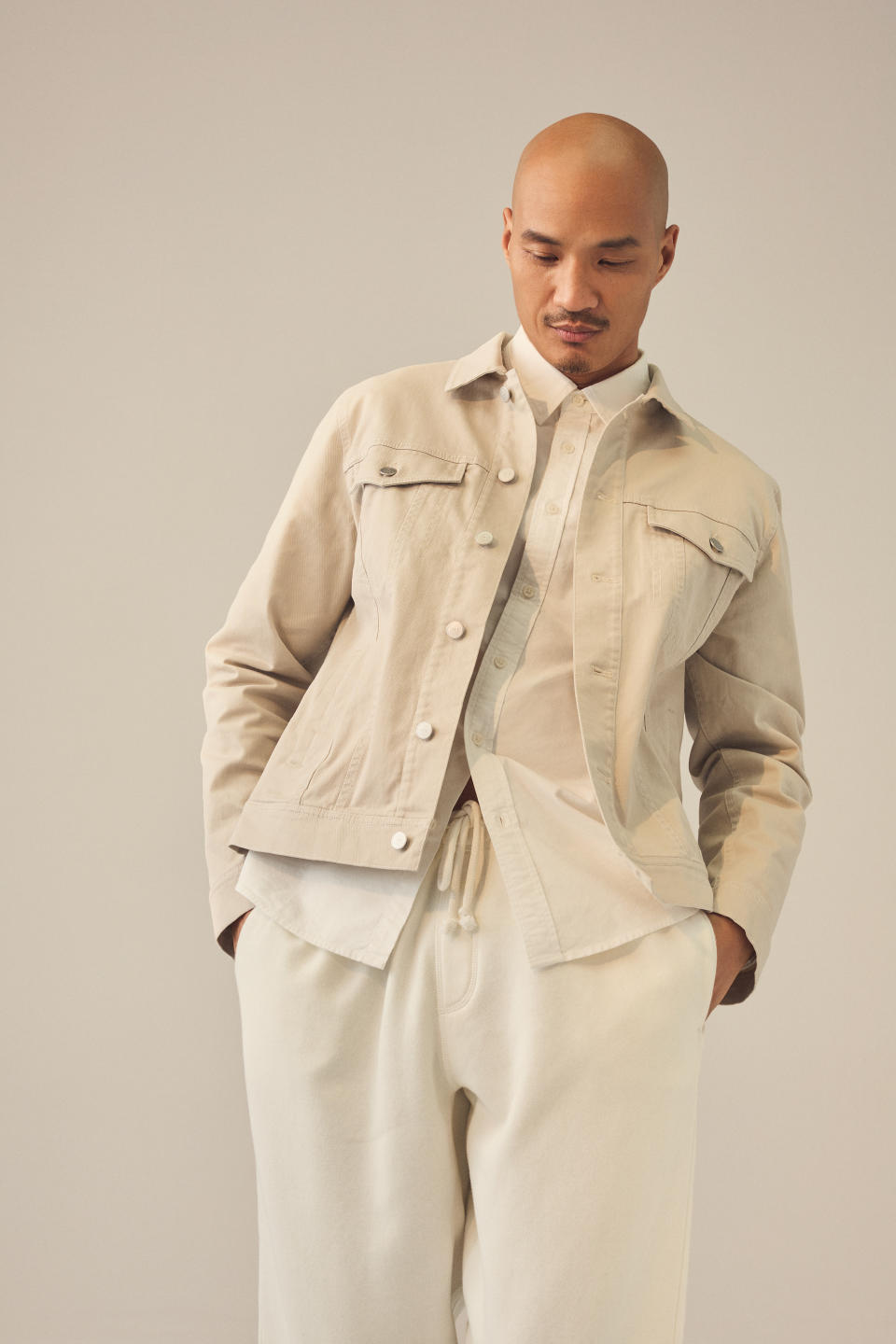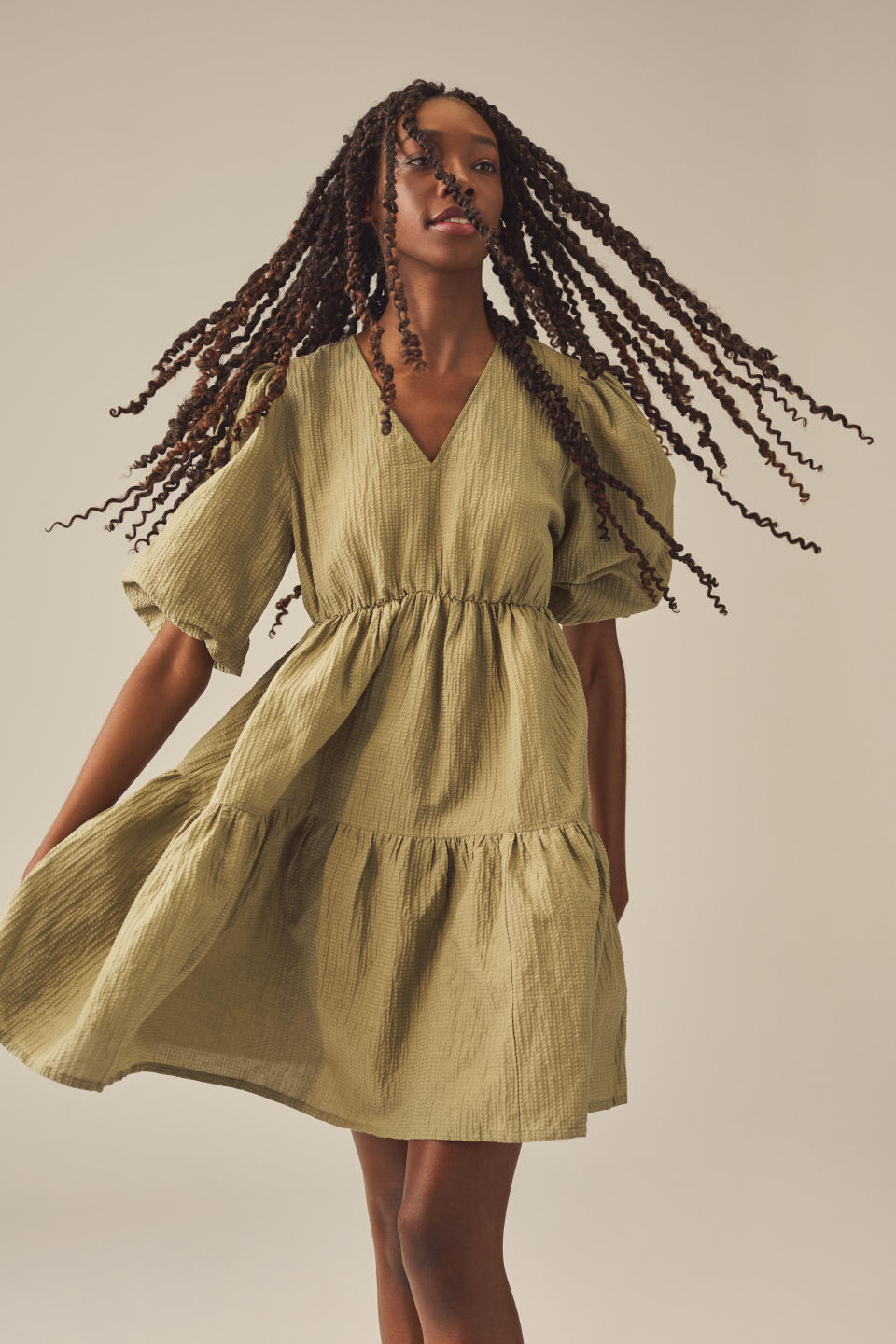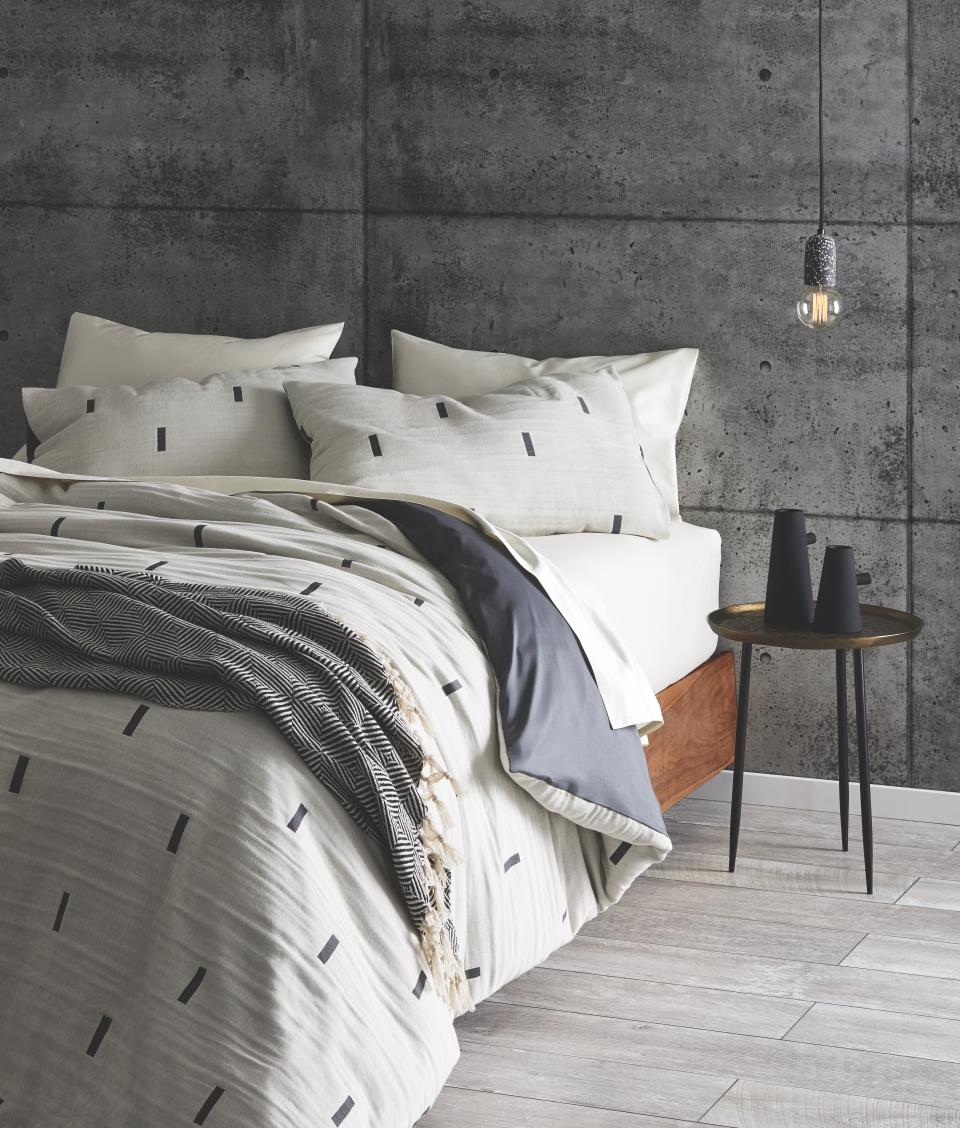Making Canada’s The Bay Less of a Secret

The Bay in Canada dates back 352 years, but there is an increasing energy determined to establish a sense of discovery and newness.
“Every single day, someone says, ‘I didn’t know you carried that brand.’ I get that all the time,” said Laura Janney, the chief merchant of The Bay.
More from WWD
It means people are noticing the retailer’s evolving mix of brands and categories and that more could be done to raise awareness and revenues.
“We are in some respects, as large as we are, the best-kept secret,” said Janney. “We are a humble company, but we need to talk more about what we have and what we do. We could probably shout about it a little more.”

Over breakfast at a restaurant in Manhattan’s Flatiron District, Janney, who oversees the buying and merchandising for the TheBay.com and the Hudson’s Bay stores, discussed how the assortment is transforming, bearing an underlying message that it’s possible to teach an old dog new tricks. Through much of its modern-day history, the business seemed behind the times, too traditional, under-funded and just hanging on for survival. A lot of the shopping done by Canadians happened south of the border.
But from early 2019 to spring 2020, the retailer dropped about 600 brands and added about 300 others. Further change has been spurred by COVID-19 and its impact on consumer behavior, as well as last year’s split of TheBay.com and the Hudson’s Bay store operations into separate companies (just like what the parent Hudson’s Bay Co. did earlier with its Saks Fifth Avenue and Saks Off 5th divisions) and last year’s conversion of The Bay’s e-commerce website into an online marketplace format.
Janney joined The Bay in 2019 as senior vice president and general merchandise manager after working at Nordstrom for 32 years. She moved into the chief merchant slot last fall when Wayne Drummond became president of the stores company, called Hudson’s Bay, and she reports to Iain Nairn, president and chief executive officer of The Bay, which is the dot-com business.
During the interview, Janney underscored what she termed “a transformation” at The Bay, and how the buying and how buyers’ work have changed. Among her observations:
• The Bay buyers are “chasing product again, out buying aggressively, and have a bigger budget.”
• The Bay is “digitally led,” meaning utilizing data from TheBay.com to better inform buying decisions for the website, and the Hudson’s Bay stores, which are being stocked with a more localized approach.
• The Bay’s traditional full-line approach is becoming even fuller through the introduction of categories not previously sold, such as sports equipment.
• By taking the 15 Percent Pledge, there’s a goal of having at least 15 percent of all new brands purchased for TheBay.com and Hudson’s Bay stores being owned and/or designed by designers who are Black, Indigenous or people of color.
• Tilting the balance of casual to dressy fashion to a higher percent of casual, though business in some dressier areas has recently picked up.
• Repurposing underproductive floor space in stores into micro-fulfillment centers for speedier deliveries of TheBay.com orders.

On Friday, the company launches Hudson North, a private brand for men and women. “This is significant. It’s deep. There will be a big social media play, and PR push. It will be a top-five volume brand” at the company, Janney said.
“Our number-one-owned brand is Gluckstein, a home brand. Ninety-seven percent of Canadian households own a Gluckstein sheet or towel.” HBC Stripes, seen in home, apparel, accessories, kids’ and baby, confectionary and pet gear, and Kode, a new sustainable home label, also are key owned brands.
“Hudson North will be centered on modern styles to wear across occasions, versatility and with a lot of dresses as we launch for spring,” said Janney. “The quintessential sweater will be an important part of Hudson North for fall.
“There is a value proposition to this. It’s accessible, sitting right at our entry-level price points, with a lot of the product under $100. We are actually going to have some higher price points, too, for things that are special. If you are a person who shops the Room [Hudson’s Bay’s designer department online and inside the Vancouver and Queen Street, Toronto flagships] you are going to see a great cashmere sweater and say, ‘Oh this looks fantastic with my Victoria Beckham bottoms.'”
Women’s items in Hudson North include maxi dresses, $110; blazers, $135, and wide jeans, $95.
In men’s, there are everyday tech shorts, $60; rib-knit polo shirts, $70, and quarter-zip long-sleeve polos, $80. All products are in Canadian dollars.
Hudson North will be merchandised separately in the women’s and men’s areas in the stores, in anywhere from 250- to 1,000-square-foot settings, and will have its own page on the website.

Janney said it’s important that Canadians realize Hudson North is designed by Canadian designers. “Canadians are very, very proud of Canadian businesses,” said Janney. “While we are not manufacturing the brand yet in Canada, there will be parts that eventually get manufactured in Canada. We could do outerwear domestically. We could do some knits. We are still working through that.”
“One of the opportunities COVID[-19] gave us was to rethink our own brands. Particularly in our apparel business, we were a bunch of labels that weren’t really thought through from a holistic consumer point of view. We were a house of just labels. We did have some strong powerhouse brands, but we needed to refresh. It was narrowed down during COVID[-19], we were probably at 12 that we would call brands. It’s down to eight. It’s not a lot of brands, but they are significant. We have other labels” that wouldn’t qualify as brands.
“Inclusion and sustainability were the things that meant the most to employees when they thought about what brands they wanted to be carried and what our private brands should be about. Those were the tenets they wanted. It makes the most difference to be proud about what they are putting out every day. While we are a small country of 38 million, we are a very diverse country. It opens us up to more voices and a much more holistic offer for the customer.”
Asked about how the split into two companies has changed The Bay and her job, Janney replied: “It enabled us to have the focus on both businesses that we needed, so that there is capital being moved into both businesses. But when we talk about the split from a consumer perspective, they don’t see it. There is no customer confusion.”
Regarding her job, “The biggest change is bringing an organization along. A lot of people would say we are a digital-first company. I would say we are a digitally led company. What that means is it enables us to use that data [from the digital operation] to make better decisions on behalf of the stores.”
She said that with the split, “We are hiring more people on The Bay side who are experts on the data creation we didn’t have before, giving the team the ability to make better product choices. That’s the biggest change.…Embedded in our planning and merchandising organization we now have a team of data-focused scientists working to build out our reporting, our systems, thinking about it differently that will enable the buyers to move faster.
“In the past, our buyers would go into the market and always start with brick-and-mortar. We always started with this is going into Queen Street. This is going into downtown Vancouver, and there were good bets out of that. Then when you thought of COVID[-19], city center changed,” as people relocated and lifestyles changed. With new data from the online marketplace, “Now you could take digital insights to understand what was happening in a postal code” and make better buying decisions.
“Habits have changed in Canada, which was one of those places in lockdown the longest. The consumer behavior has changed, for me in the past six months, we have been thinking about things differently and leading our teams differently around how you think about business, how you get product in. This is what I am most excited about. We are chasing again and out buying aggressively. It’s a bigger budget. I’m not going to tell you what it is, but it’s because of COVID[-19] ending, and the expansion of our digital business.”

In the second half of last year, The Bay partnered with NuOrder by Lightspeed, a business-to-business marketplace platform connecting retail buyers and suppliers in real time to develop assortments and complete orders. The technology is designed to help buyers make decisions and collaborate easily with vendors via a “visually driven and intuitive platform.”
With NuOrder, “We just completed our very first buys with our footwear team and it’s going really well. Our designer teams and part of our men’s and women’s specialized businesses, which are active and intimate, all of those businesses are starting to go live right now. By fall, all of our areas will be on it.” She said with NuOrder, there’s a better understanding of the assortment, how it’s bought, where there is duplication, what you can go after. It’s all cloud-based. I can look at the entire assortment and see how many styles we bought of this in purple, for example. Saks is on NuOrder, too. We have learned from that. A good majority of our best brands use NuOrder so it was a natural link for us.”
She said The Bay is Canada’s seventh largest dot-com business. Amazon, Walmart and Costco are the top three in volume.
“We will move rapidly well above seven, based on what the split has enabled us to do — the ability to leverage people, product and place, and drive a better business.”
It’s given the company the ability and confidence to introduce categories, such as exercise equipment including treadmills, not carried before and expand those only dabbled in before, like pet supplies, rugs, outdoor furniture, toys and kids, and even significantly expand footwear. TheBay.com marketplace launched in March 2021.
Based on learnings from the digital business, City Chic, a size-inclusive sportswear brand from Australia, is being rolled out to 23 Hudson’s Bay stores this spring. “The majority of the selection is on marketplace and we now have an owned selection that will be in stores,” said Janney. The Bay’s online marketplace, engineered by Mirakl, lists products that may or not be bought by The Bay.
River Island, a brand from the U.K. offering men’s and women’s clothing, footwear and accessories, launched at the end of November on TheBay.com, and will be in seven Hudson’s Bay stores by May, and more heading into next year.
Mango, the Barcelona, Spain-based fashion brand, is on TheBay.com, as well as in 52 Hudson’s Bay stores for women’s, and 40 that sell Mango men’s. “It is our number-two-searched brand at TheBay.com,” Janney said. “Canadians love Mango. We will continue to expand it into more doors.”
Asked what designer brands are being introduced for fall, officials cited Blumarine, Nicole Benisti, Paul Andrew, Angelo Figus, LaQuan Smith, Delos, Quira, Martine Rose, GmbH and The Great.
TheBay.com will later this year launch 13 Lune, a Black, Indigenous and people of color-specific beauty curation.
“We are always getting new brands, but we have really shifted our brand mix, from an apparel standpoint, to a strong assortment of great brands people desire, brands people really think about,” Janney said, citing Nike, Levi’s and Mango, among others. “Nobody knows the Canadian consumer like The Bay.” A prototype Levi’s format is expected to launch at a couple of Hudson’s Bay stores in the near future.
“It was about reshaping (the mix) to relevant product and I would say we have narrowed [that product]. We have strategic brands that are big partners, the brands where we have opportunity because customers want to see more of it, where they can see all aspects of Adidas, all aspects of Mango.”
On the brick-and-mortar side of the picture, it’s been a pretty stable store count, without mass closings. The company has 85 locations throughout Canada, and will be opening a replacement store in 2024 in Vancouver’s Oakridge Centre, which is being redeveloped. Hudson’s Bay closed four stores in the last five years.
Considering the expanse of Canada and how spread out the population of 38 million is, deliveries can take several days, but that’s changing.
“We have taken some of the stores and gone from two floors to one floor. Some floors are being used for micro fulfillment. It’s about right-sizing the store and getting the data to get the right merchandise in there,” said Janney. “We are doing that right now on the West Coast of the country and it’s enabling us to get our best choices from TheBay.com to customers faster. We can do same-day, next-day for 45 percent of Canadians. It’s built around key categories: our beauty business, our big seasonal businesses like outerwear for the fourth quarter, and intimates and men’s basics. We are also piloting same-day delivery in Toronto and Vancouver.” The company operates three distribution centers in Scarborough in Toronto, Vancouver and Calgary.
Merchandise is imported through ports in Quebec and Vancouver, as well as in Los Angeles and Seattle before being shipped to Vancouver.
“There were mudslides collapsing railways, fires that impacted the rail system all through the summer. There were strikes. We had a significant amount of disruption that I think we weathered well, but we have not been immune to supply chain disruptions,” Janney said. “The challenges still remain around supply chain issues. We are still dealing with build-ups at ports and COVID[-19] issues.
“In the same boat, I am happy to report that right now we are feeling good about inventory. We are in a really good position in terms of current inventory and really look to be so much reactionary. If this is [selling] let’s recut it. We are working with our partners on categories where we might need to book sooner so we are ensuring that we get the goods in. We booked the outerwear buys earlier than we ever have so we know we will get it on time. It’s one of our major categories for the back half of the year.”
Typically, buyers shop the outerwear market in January, February and March to book for fall. But buyers started shopping back in October 2021 and completed bookings in February 2022, for the second-half selling.
“Our outlook is strong, there is a lot of savings in Canada that is ready to get spent. Canadians are starting to come back, to all of our businesses,” said Janney.
As part of a privately held company, The Bay does not disclose its volume or profitability.
“The world is more casual, but there is a real dressed-up part of our business, and we are seeing similar trends that are happening in the U.S. We are selling a heck of a lot of occasion dresses. We are chasing men’s suits, dress shirts, sport coats, seeing all that start to trend again. At the same time we still sell a good sweatpant every day.
“Pre-COVID[-19], we would have read more dressy than casual, particularly in our men’s offer, which was 60 percent built around dressier portions, more business attire, and was underpenetrated in casual and for the weekend.
The chief merchant described menswear as being transformed so that dressier styles represent about 30 percent of the offer and are growing in response to selling trends and what’s envisioned. “I wouldn’t necessarily say it’s casual. It’s an everyday offer that can carry you all the way from Sunday to Saturday.”
Given macro factors and changing consumer lifestyles, Janney acknowledged that being a merchant has become more complicated. “We have more things to think about, but as a merchant, it’s never not been complicated,” she said. “You are always managing to how the customer is changing, you have to somewhat understand logistics, you have to understand, that balance of using data with what you know is coming down the pike. It’s listening and being observant.
“For awhile, you didn’t get to travel, so how did you see outside of your own country to understand what is next? Now we are back out there. It’s exciting to be more bullish, to take risks.
“It’s complicated, but now you have more levers that can help you navigate through that.”

Sign up for WWD's Newsletter. For the latest news, follow us on Twitter, Facebook, and Instagram.

